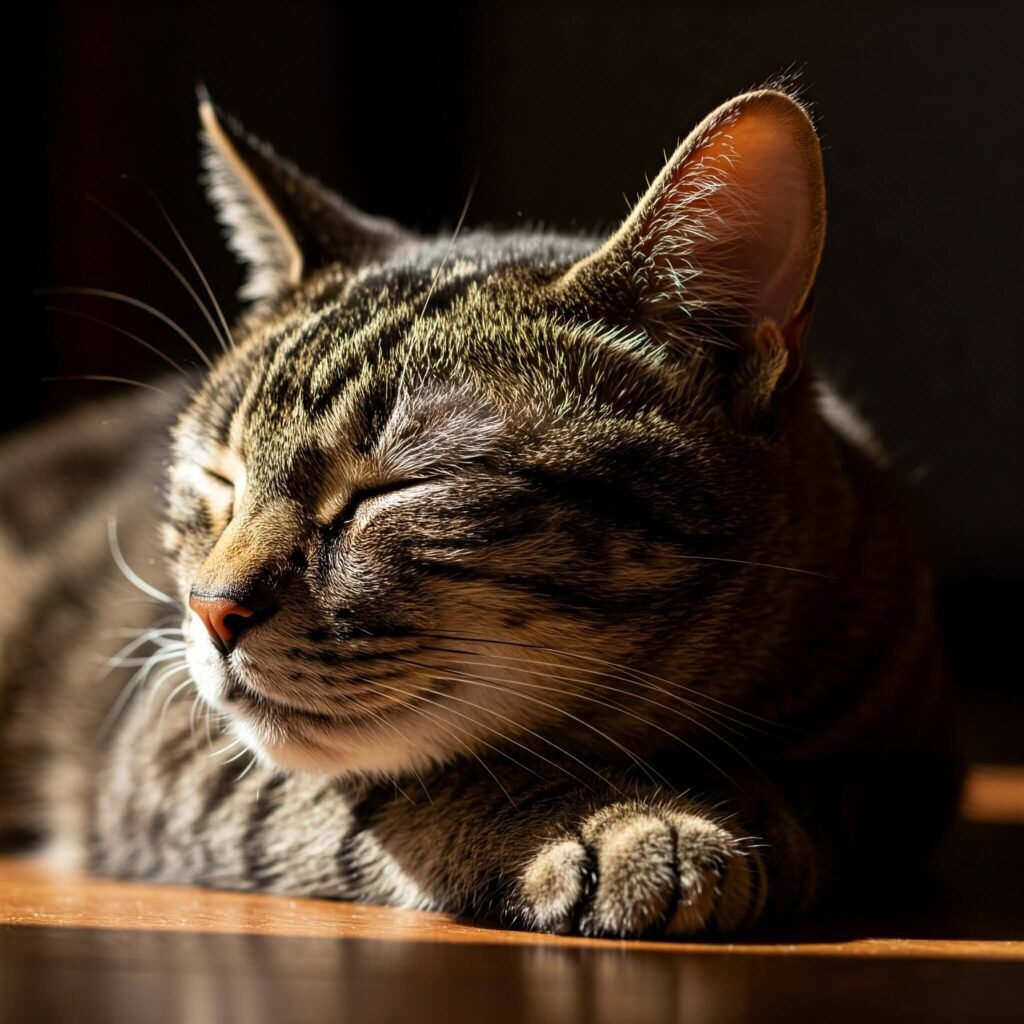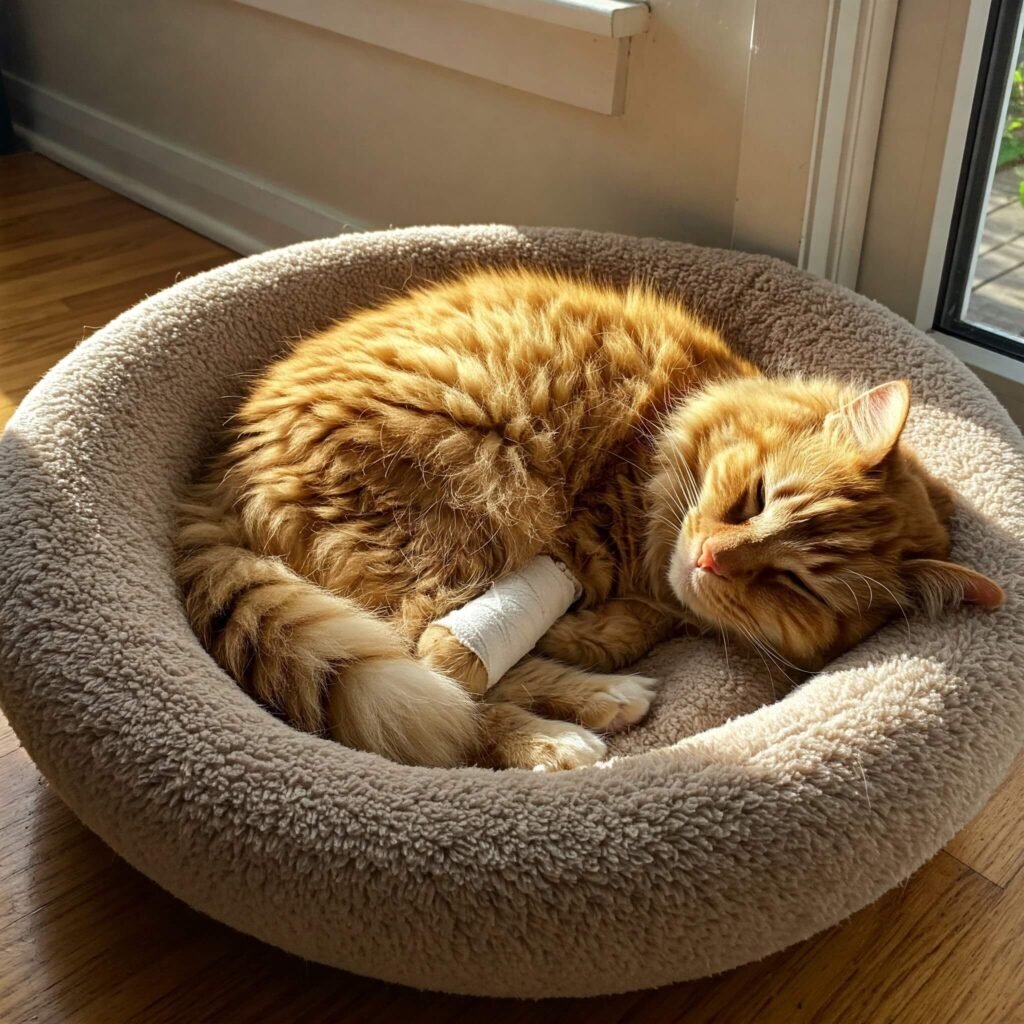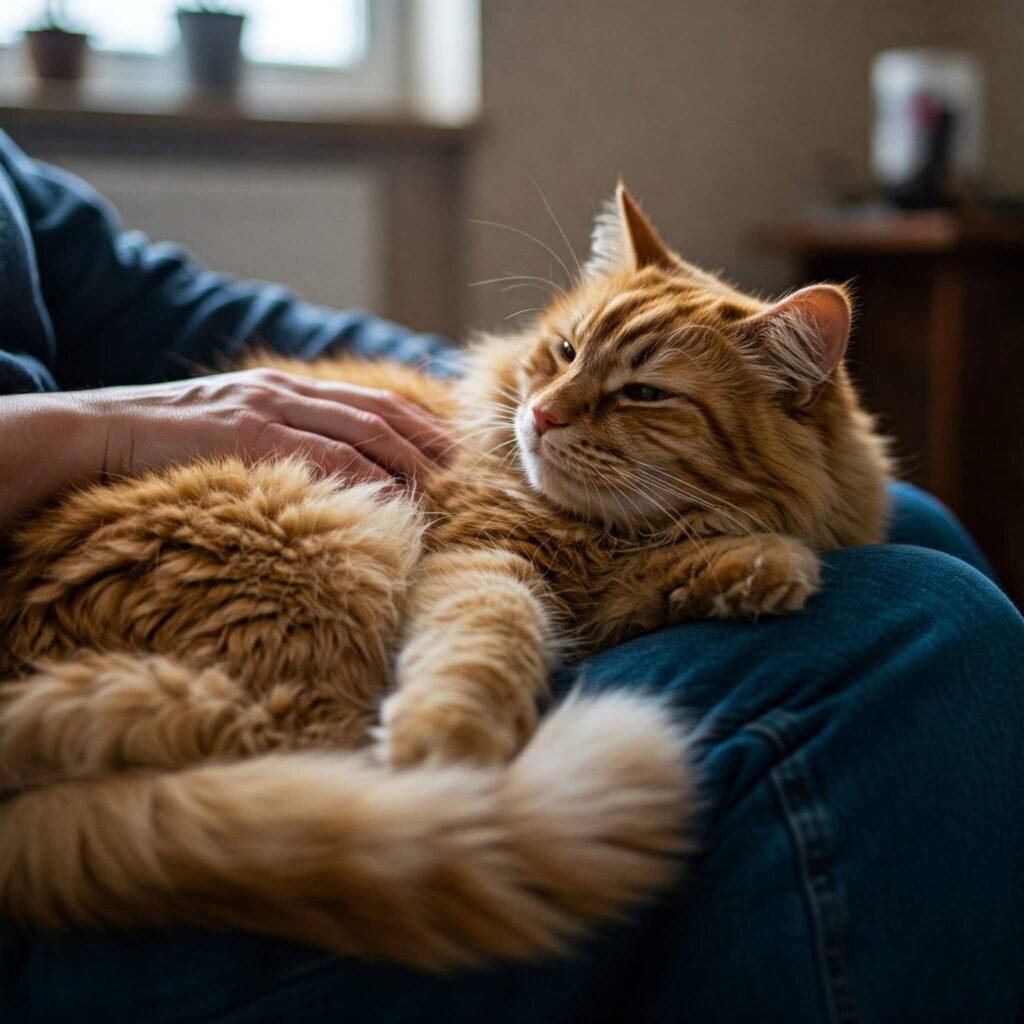That gentle rumble emanating from your feline friend – the purr – is one of the most comforting sounds a cat owner can hear. But why does my cat purr? It’s not always a simple sign of contentment. In this blog post, we’ll delve into the fascinating world of purring, exploring seven key reasons behind this captivating cat behavior. Understanding these nuances will deepen your bond with your furry companion and give you valuable insights into their well-being.
Unraveling the Mystery: Why Do Cats Purr?
The question, “Why do cats purr?,” has intrigued scientists and cat lovers for years. While the most common association is happiness, the reality is far more complex. Cats purr through a unique mechanism involving the larynx and diaphragm muscles, creating vibrations within their chest. These vibrations aren’t just for show; they serve a variety of purposes. Let’s explore the main reasons why your cat might be purring.
1. Contentment and Happiness: The Classic Purr
The most widely recognized reason why a cat purrs is to express pleasure and satisfaction. When your cat is being petted, enjoying a warm nap in a sunbeam, or indulging in a delicious meal, that soft rumble often signifies pure bliss. This “contentment purr” is usually accompanied by relaxed body language, such as kneading, slow blinking, and a soft, open posture.

2. Seeking Attention and Food: The Persuasive Purr
Sometimes, why your cat is purring is a strategic move to get your attention, especially when food is involved! Studies have shown that cats can manipulate their purrs to include a higher frequency sound, similar to a baby’s cry. This “solicitation purr” is particularly effective at eliciting a nurturing response from humans. So, that insistent purr around mealtime might be your cat’s way of saying, “Hey, it’s dinner time!”
3. Self-Soothing and Comfort: Purring Through Stress
Interestingly, cats also purr when they are stressed, anxious, or in pain. So, why would a cat purr in such situations? The vibrations produced during purring are believed to have therapeutic benefits. These low-frequency vibrations can stimulate bone and tissue repair, provide pain relief, and promote healing. It’s like a built-in therapy mechanism for our feline friends. You might notice a cat purring at the vet’s office or when recovering from an injury.

4. Mother-Kitten Bonding: The Earliest Purr
Purring plays a crucial role in the bond between a mother cat and her kittens. Newborn kittens are born blind and deaf, but they can feel the vibrations of their mother’s purr. This purr acts as a homing beacon, guiding them to warmth, safety, and nourishment. The mother cat also purrs to reassure her kittens. This early association likely contributes to the comforting nature of purring throughout a cat’s life.
5. Healing and Regeneration: The Purr’s Power
As mentioned earlier, the frequency of a cat’s purr (typically between 25 and 150 Hertz) is within the range known to promote bone growth and fracture healing. This could explain why a cat might purr when injured. The vibrations may help reduce swelling, alleviate pain, and accelerate the recovery process. This remarkable ability highlights the evolutionary significance of purring.
6. Expressing Affection: A Sign of Love
Just like humans use vocalizations and physical touch to show affection, cats use purring to communicate their love and bond with their owners. When your cat snuggles up to you and starts to purr, it’s a clear sign that they feel safe, comfortable, and connected to you. This “affectionate purr” is a beautiful expression of the unique relationship you share.

7. Sometimes, We Don’t Fully Know: The Ongoing Mystery of Purring
While we understand many reasons why cats purr, there are still aspects of this behavior that remain a mystery. Sometimes, a cat might purr seemingly without any obvious trigger. Researchers continue to study the nuances of feline communication, and our understanding of purring may evolve further. This ongoing exploration makes the phenomenon even more intriguing.
Understanding Your Cat’s Purr: Actionable Takeaways
- Context is Key: Pay attention to your cat’s body language and the situation surrounding their purring to understand the underlying reason.
- Not Always Happiness: Remember that purring doesn’t always mean contentment; it can also indicate stress or pain.
- Listen Closely: Be aware of changes in your cat’s purr. A sudden increase or decrease in purring, or a change in its sound, could indicate a health issue. Consult your veterinarian if you have any concerns.
- Enjoy the Rumble: Regardless of the reason, your cat’s purr is a unique form of communication and a testament to the special bond you share. Cherish those moments of feline serenade!
Outbound Reference Links:
- Cornell Feline Health Center: [Insert Link to Cornell Feline Health Center Website on Cat Behavior]
- The Cat Fanciers’ Association (CFA): [Insert Link to CFA Website]

